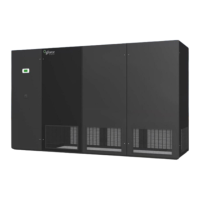65
contaminants such as Legionella. Chapter 49 of the ASHRAE Handbook—HVAC Applications
covers water treatment in more detail. Specific recommendations on water treatment can be
obtained from water treatment suppliers.
Scale treatment
In daily use, scale accumulates at the water side of heat exchangers therefore regular scale
treatment is a must.
Variations in water quality from place to place and variations in applications of plate heat
exchangers make it difficult to define in simple terms the water quality requirements for
minimum maintenance. It is important to ensure the right water quality and reduce scale by
establishing the requirements for local conditions or utilizing specialist water treatment
companies.
The following should be paid attention to in daily maintenance.
Undissolved solids (turbid water)
If undissolved solids and other fibers are in the water, the channels of the condenser are easily
blocked. Fibrous debris cannot pass the heat exchanger and must be disposed of. To reduce
undissolved solids blocking the condenser, granules should be smaller than 0.8mm and is
recommended to fit a 40-70 mesh strainer. Regular maintenance of this unit is required to
ensure continued performance.
Dissolved products
Under certain circumstance crystallized deposits of calcium and magnesium ion in the water
will attach to the condenser surface and scale. The higher the concentration of Ca2+ and Mg+
and the water temperature, the greater the possibility of scale formation. Thick scale will not
only gravely affect heat transfer capability but even block the channels. As a result, never use
this kind of water directly and always carry out water treatment beforehand.
Cleaning
Although cleaning of in situ condensers is a difficult process, it may be necessary in extreme
circumstances. Fouling of a condenser can be corrected by chemical cleaning, reverse
flushing or a combination of both. Both procedures will require temporarily disconnecting the
condenser on the water side and preforming these procedures. Reverse flushing in situ is the
simplest option and may be the only treatment necessary if fouling is predominantly caused by
sedimentation. If however, scaling has occurred, chemical cleaning will be necessary. This
should be performed using a weak acid cleaning liquid pumped through the heat exchanger in
reverse flow direction at approximately twice the normal flow rate. Remember that the cleaning
acid should be circulated in reverse flow for usually 24 hours. At the completion of the cleaning
process, it is important that the condenser be flushed with clean water for at least 30 minutes.
Corrosion protection
Stainless steel has a high resistance to most chemicals but is sensitive to chloride ion
concentration so this must be limited to 280ppm or less in systems operating at less than 131°F
(55°C). The copper used in the brazing process is mainly sensitive to strong acid and

